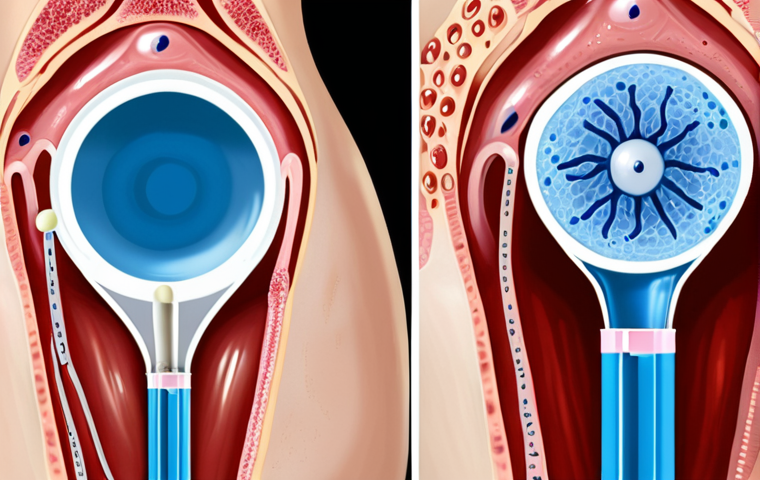Knee pain can really put a damper on your day, especially when it starts affecting your mobility. If you’ve been experiencing discomfort and suspect it might be related to cartilage damage, you’re probably wondering about your options.
One treatment that’s been gaining traction is knee cartilage regeneration injections. As someone who’s dealt with similar issues, I know the first thing that pops into your head is, “How much is this going to cost me?” The price can vary significantly based on several factors, making it a bit of a maze to navigate.
Let’s dive in and demystify the cost factors associated with knee cartilage regeneration injections. Navigating the world of knee cartilage repair can feel like venturing into uncharted territory, especially when you start factoring in the costs associated with regenerative injections.
These injections, often touted as a promising alternative to more invasive procedures, aim to stimulate the body’s natural healing processes to repair damaged cartilage.
The good news is, advancements in medical technology are constantly evolving, offering hope for those seeking relief from knee pain and improved joint function.
Looking ahead, we might see even more personalized approaches to these treatments, tailoring the injections to an individual’s specific needs for optimal results.
But before you get too excited, let’s talk about the elephant in the room: the price tag. From what I’ve gathered, the cost of knee cartilage regeneration injections can vary quite a bit depending on several factors.
These include the type of injection used (e.g., PRP, stem cell therapy, hyaluronic acid), the clinic or provider you choose, the number of injections required, and even your geographical location.
I’ve also noticed a growing trend towards combining these injections with other therapies like physical therapy or bracing to enhance their effectiveness.
So, keep in mind that the overall cost might include these additional services. For a clearer understanding of the expenses involved, let’s delve deeper into the various components that make up the total cost.
Let’s get down to brass tacks and take a closer look!
Alright, let’s dive into breaking down those knee cartilage regeneration injection costs.
Decoding the Injection Types: What Are You Really Paying For?

PRP (Platelet-Rich Plasma) Injections: Your Body’s Own Healing Power
PRP injections involve drawing a small amount of your blood, processing it to concentrate the platelets, and then injecting it back into your knee. Platelets contain growth factors that can stimulate cartilage repair.
The cost for PRP can range from $500 to $1,500 per injection. When I was exploring options for my knee, I learned that some clinics offer package deals, bringing down the per-injection cost if you commit to a series of treatments.
What’s neat about PRP is that it’s autologous, meaning it uses your own blood, so there’s less risk of allergic reactions. Personally, the idea of using my body’s natural healing mechanisms was really appealing.
Stem Cell Therapy: The Cutting Edge Option
Stem cell therapy is a bit more complex and can be more expensive. It involves harvesting stem cells from your bone marrow or fat tissue, processing them, and then injecting them into your knee.
Stem cells have the potential to differentiate into cartilage cells, promoting regeneration. The cost can vary significantly, ranging from $3,000 to $10,000 or more per injection.
In my research, I found that the source of the stem cells (bone marrow vs. fat) and the clinic’s expertise can greatly influence the price. This treatment is definitely an investment, but for many, the potential for long-term relief makes it worthwhile.
Hyaluronic Acid Injections: Lubrication and Cushioning
Hyaluronic acid (HA) injections, also known as viscosupplementation, involve injecting HA into the knee joint to improve lubrication and reduce friction.
While HA doesn’t regenerate cartilage, it can alleviate pain and improve joint function. The cost for HA injections typically ranges from $200 to $800 per injection.
One thing I found helpful was that some insurance plans may cover HA injections, especially if other treatments haven’t worked. From my perspective, this option seemed like a good starting point to manage symptoms while exploring other regenerative therapies.
The Clinic Factor: Location, Location, Location
Geographical Disparities: Where You Live Matters
The cost of knee cartilage regeneration injections can vary significantly depending on your location. Clinics in major metropolitan areas or high-cost-of-living regions tend to charge more than those in smaller towns or rural areas.
For example, you might find that a PRP injection costs $1,200 in New York City, whereas the same treatment might cost $800 in a less populated state.
Facility Reputation and Expertise
The reputation and expertise of the clinic or provider can also impact the cost. Highly reputable clinics with experienced specialists may charge more for their services.
When researching clinics, look for board-certified physicians with extensive experience in regenerative medicine. Reading patient reviews and testimonials can also provide valuable insights into the quality of care and expertise offered.
The more research you do, the more confident you’ll feel in your choice.
Unpacking the Consultation and Treatment Plan Costs
Initial Consultation Fees: The First Step
Before undergoing knee cartilage regeneration injections, you’ll typically need to schedule an initial consultation with the provider. During this consultation, the doctor will evaluate your condition, review your medical history, and determine if you’re a good candidate for the treatment.
Some clinics offer free consultations, while others charge a fee ranging from $100 to $300.
Diagnostic Imaging: Seeing the Full Picture
Diagnostic imaging, such as X-rays or MRIs, may be required to assess the extent of cartilage damage and rule out other underlying conditions. The cost for these imaging tests can vary depending on the facility and your insurance coverage.
X-rays typically range from $100 to $300, while MRIs can cost anywhere from $500 to $2,000. It’s important to check with your insurance provider to understand your coverage and potential out-of-pocket expenses.
The Number of Injections: More Isn’t Always Better
Determining the Right Dosage
The number of injections required can also influence the total cost of treatment. Some patients may only need one injection, while others may require a series of injections spaced several weeks apart.
The number of injections needed depends on the severity of your condition and your response to the treatment. I remember my doctor explaining that the goal isn’t just about the number of injections, but about optimizing the body’s healing response.
Maintenance Injections
Some patients may benefit from maintenance injections to sustain the effects of the initial treatment. These maintenance injections are typically administered every few months or years.
The cost for maintenance injections is usually similar to the cost of the initial injections. My neighbor gets a booster shot every six months, and he swears it keeps him active.
Insurance Coverage: Navigating the Fine Print
Understanding Your Policy
Insurance coverage for knee cartilage regeneration injections can be tricky. Many insurance companies consider these treatments to be experimental or investigational, and therefore, they may not be covered.
However, some insurance plans may cover certain types of injections, such as hyaluronic acid injections, if other treatments have failed. It’s essential to contact your insurance provider to understand your coverage and any pre-authorization requirements.
Appealing Denials
If your insurance claim is denied, you have the right to appeal the decision. To increase your chances of a successful appeal, gather supporting documentation from your doctor, including medical records, imaging reports, and a letter of medical necessity.
It’s also helpful to research your insurance company’s policies on regenerative medicine and identify any loopholes or exceptions that may apply to your case.
Exploring Financing Options: Making It Affordable
Payment Plans and Medical Loans
If you’re unable to afford the full cost of knee cartilage regeneration injections upfront, explore financing options such as payment plans or medical loans.
Many clinics offer payment plans that allow you to spread the cost of treatment over several months. Medical loans are another option, but be sure to compare interest rates and terms before applying.
Health Savings Accounts (HSAs) and Flexible Spending Accounts (FSAs)
If you have a Health Savings Account (HSA) or a Flexible Spending Account (FSA), you can use these funds to pay for eligible medical expenses, including knee cartilage regeneration injections.
HSAs and FSAs offer tax advantages, making them a cost-effective way to manage your healthcare expenses. Check with your HSA or FSA administrator to confirm that the treatment is an eligible expense.
Okay, here’s that table you requested to help break down the costs:
| Type of Injection | Typical Cost per Injection | Notes |
|---|---|---|
| PRP (Platelet-Rich Plasma) | $500 – $1,500 | Uses your own blood; may require multiple injections |
| Stem Cell Therapy | $3,000 – $10,000+ | More complex; potential for long-term regeneration |
| Hyaluronic Acid | $200 – $800 | Provides lubrication; may be covered by insurance |
| Initial Consultation | $100 – $300 | May be free at some clinics |
| Diagnostic Imaging (X-ray) | $100 – $300 | To assess cartilage damage |
| Diagnostic Imaging (MRI) | $500 – $2,000 | More detailed assessment of cartilage damage |
By understanding these cost factors, you can make informed decisions and explore options that fit your budget and healthcare needs. Knee pain doesn’t have to sideline you, and with the right approach, you can get back on your feet!
In Conclusion
Navigating the world of knee cartilage regeneration injections can feel like decoding a secret language, but hopefully, this breakdown has made the process a bit clearer. Remember, it’s all about weighing the potential benefits against the costs, doing your homework, and finding a provider you trust. Don’t let knee pain dictate your life – explore your options and get back to doing what you love!
Useful Information to Know
1. Second Opinions Matter: Always get a second opinion from another qualified healthcare provider before committing to any treatment. This can help you make a more informed decision.
2. Ask About Hidden Costs: Make sure to ask your clinic about all potential costs, including pre- and post-operative care, follow-up appointments, and any other fees that may not be immediately apparent.
3. Check for Clinical Trials: Look into whether any clinical trials are being conducted in your area that you might be eligible for. Participating in a clinical trial could give you access to cutting-edge treatments at a reduced cost.
4. Consider Travel Options: If you’re willing to travel, you might find more affordable options in other cities or states. Just be sure to factor in travel and accommodation costs when making your decision.
5. Explore Alternative Therapies: While injections can be effective, don’t overlook other conservative treatments like physical therapy, weight management, and pain medication. These can often complement injection therapies and improve your overall outcome.
Key Takeaways
Cost Varies Widely: The price of knee cartilage regeneration injections can vary significantly based on the type of injection, your location, and the clinic you choose.
Insurance is Key: Always check with your insurance provider to understand your coverage and any potential out-of-pocket expenses. Don’t hesitate to appeal denials.
Do Your Research: Invest time in researching clinics, providers, and financing options to make informed decisions that align with your budget and healthcare needs.
Frequently Asked Questions (FAQ) 📖
Q: What specific factors most significantly impact the overall cost of knee cartilage regeneration injections?
A: From what I’ve personally looked into, the biggest cost drivers are the type of injection (PRP, stem cell, hyaluronic acid injections all have different price points), the expertise and reputation of the clinic or doctor performing the procedure (more experienced folks often charge more), and the number of injections you’ll need.
Location matters too – big city clinics tend to be pricier. Don’t forget to factor in consultation fees and possible imaging tests like MRIs, which add to the initial cost.
Q: Are knee cartilage regeneration injections typically covered by health insurance in the US?
A: This is a tricky one! Honestly, coverage is all over the place. From what I’ve gathered, many insurance companies consider these injections “experimental” or “investigational,” meaning they often don’t cover them.
It really depends on your specific insurance plan, the reason for the injections, and even the doctor’s coding practices. My advice? Call your insurance company before you even think about scheduling the procedure.
Get everything in writing so you aren’t hit with a nasty surprise later. Some folks have had luck appealing denials with a detailed letter from their doctor arguing the medical necessity, but no guarantees.
Q: What are some potential hidden costs associated with knee cartilage regeneration injections that I should be aware of?
A: Oh, there are definitely a few things to watch out for! First, factor in the cost of follow-up appointments with your doctor to monitor your progress.
Then, there’s physical therapy, which is often recommended after the injections to strengthen the muscles around your knee and optimize healing – and that adds up!
Don’t forget pain medication, if you need it, and any assistive devices like crutches or a knee brace. And lastly, consider the time off work – can you swing it without losing income?
It’s easy to get caught up in the cost of the injections themselves, but remember to budget for the whole recovery process.
📚 References
Wikipedia Encyclopedia
구글 검색 결과
구글 검색 결과
구글 검색 결과
구글 검색 결과
구글 검색 결과






